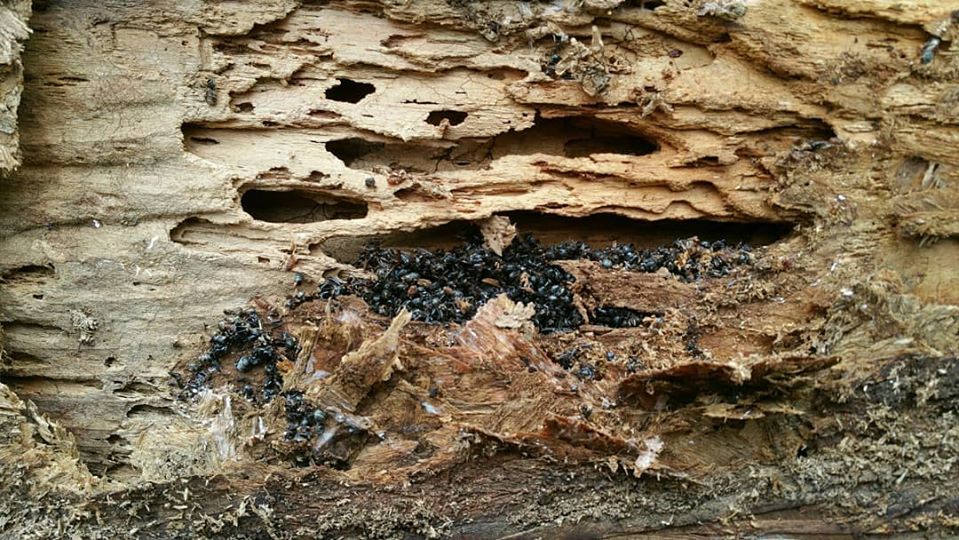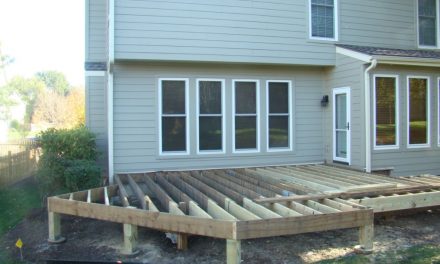One of a home owner’s worst nightmares is termite and carpenter ant damage to their home. Having knowledge to help prevent infestation and damage is your first line of defense. Home owners should inspect their home bi-annually. We would recommend doing this in the spring and autumn.
In the spring carpenter ants are active, as they are seeking new nest areas. You can visually see them in or near your home. In the autumn, you can check areas round your home for wood damage. If you find that you have carpenter ants or termite activity, we recommend treating your home immediately. Any damage found should be repaired to prevent further damage.
During the bi-annual inspection a home owner should look for any water damage around windows, doors and siding near the foundation. These are areas that carpenter ants will gravitate towards as they are drawn to soft wood. Don’t be fooled though, they will make their nest in dry areas too.
What to look for
A carpenter ant infestation will leave piles of wood shavings around an area. These shavings can be found beneath wooden items. Carpenter ants receive no nutrition from wood, they burrow tunnels for nesting. Therefore, you will find wood shavings in areas infested with carpenter ants.
American Pest recommends checking these areas, “If you have places on the outside of your home where the wood touches the soil (especially if it is in a moist, shady spot) look there for evidence of termite activity. If the wood looks like it has been attacked by carving knives and the troughs are rough to the touch, you can be relatively sure termites have been at work in that location.” Since termites are attracted to wet wood, you may smell a musty or mildew smell in the area.
“Carpenter ants prefer to nest in structural lumber such as in wall voids, hollow doors, windows and foam panels. Carpenter ants typically seek wood that has been softened by moisture, decay or other insects.”
Listen for them
Termites that have entered a home will make a banging or clicking noise. Carpenter ants make a rustling noise within the walls. If you place your ear to a wall or use a stethoscope, you can hear the activity in a wall. At this point, you have a definite termite infestation that needs immediate attention.
Physical Difference
The Spruce gives an excellent description of the differences between a termite and carpenter ant. If you are unsure it’s always best to contact an exterminator to have them come and inspect your home.
“Body shape: If you look at the insect’s body shape, take a good look at the abdomen area. A termite has no “waist,” instead, its body is more rectangular, without any narrowing in the center. In contrast, the carpenter ant has a very well-defined narrow, constricted waist.
Antennae: An insect’s feelers can say a lot about the insect, too. A termite has straight, beaded antennae, meanwhile, a carpenter ant’s antennae are bent or “elbowed.”
Wings: Both insects are winged creatures and each has four wings. You’d think, well, that’s not helpful, but honestly this characteristic is actually one of the better differentiating characteristics. A termite has wings that are of equal size and shape and its wings are much longer than its body. A carpenter ant’s back, hind wings are shorter than its front forewings and the wings do not look unusually long or disproportionate to its body. Another thing with termites is that their wings are not as durable as ants. The wings of the termite fall off easily. The loose wings can often be seen near the opening of a termite nest and can be used to identify a termite infestation.
Color: Ant workers are reddish or dark-colored and are frequently seen in the open foraging for food. Termite workers, by comparison, are transparent, light or creamy white in color, and they avoid light. Termites are rarely noticed unless their nest is disturbed.”
Prevention
- Seal gaps where electrical lines and pipes enter your home.
- Store firewood at least 20 feet from the home
- Window flashing to prevent water damage that termites and carpenter ants are drawn too.
- Caulk windows and doors
- Avoid ground to wood when building. This is a prime area that termites and carpenter ants use to enter your home.
- Keep your gutters and drain spouts cleaned out. Clogged gutter can cause water damage to your home
- Trim bushes, shrubs and trees that brush against your siding or roof. Keep a 3 to 6 inch space between the soil around the foundation and the bottom row of siding. This will prevent ants from nesting in the siding.
Most importantly, early detection and possibly save you thousands of dollars in damage repair to your home. Unfortunately, insurance does not cover termite or carpenter ant damage. We cannot express enough that bi-annual inspection of your home is important. If you find that you have damage to your home contact a licensed and insured contractor to do the repair work. If CH can assist you with your home repairs, please contact us.





